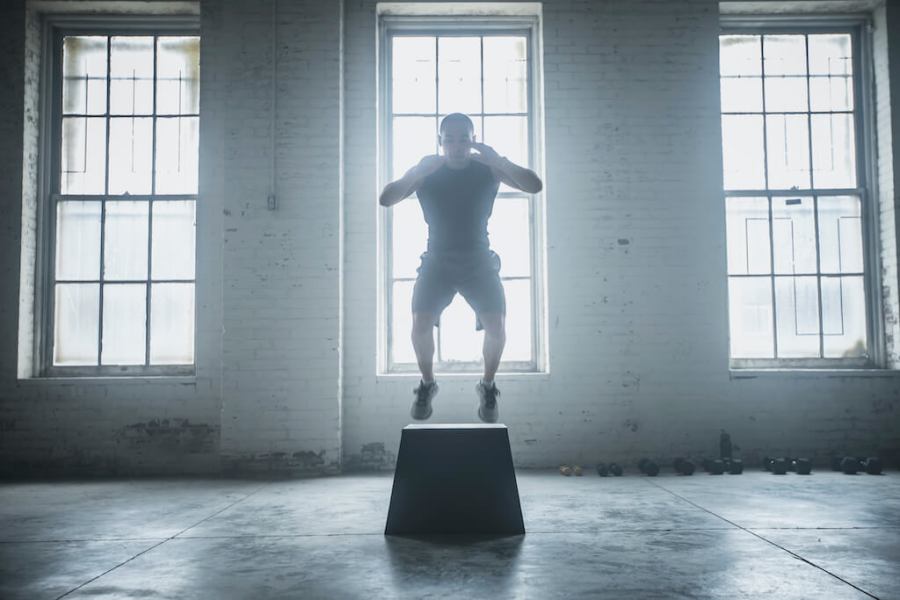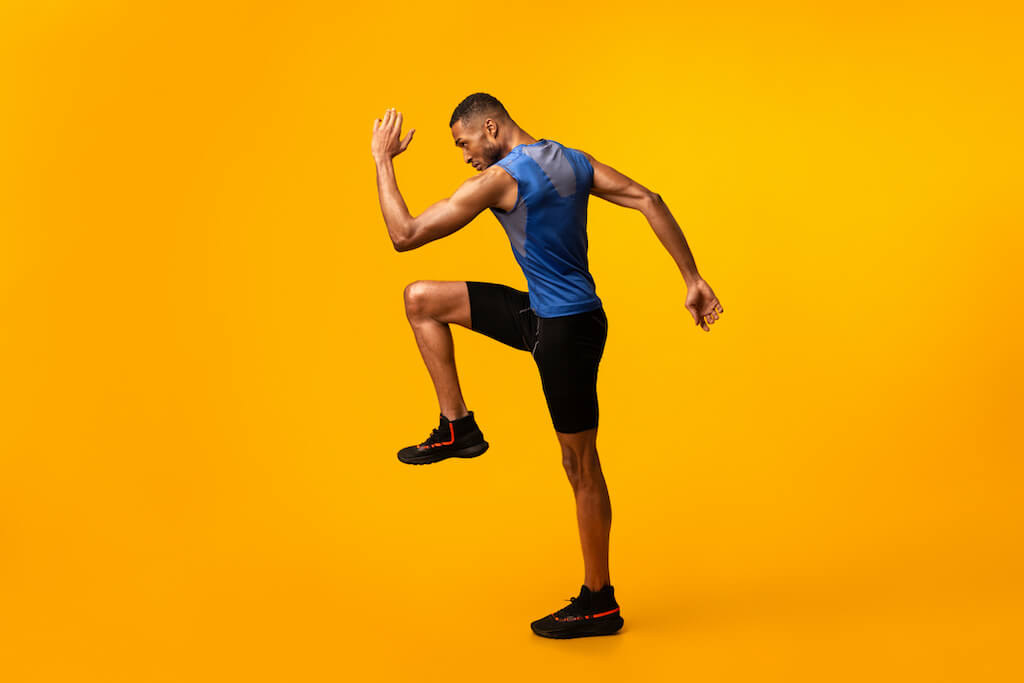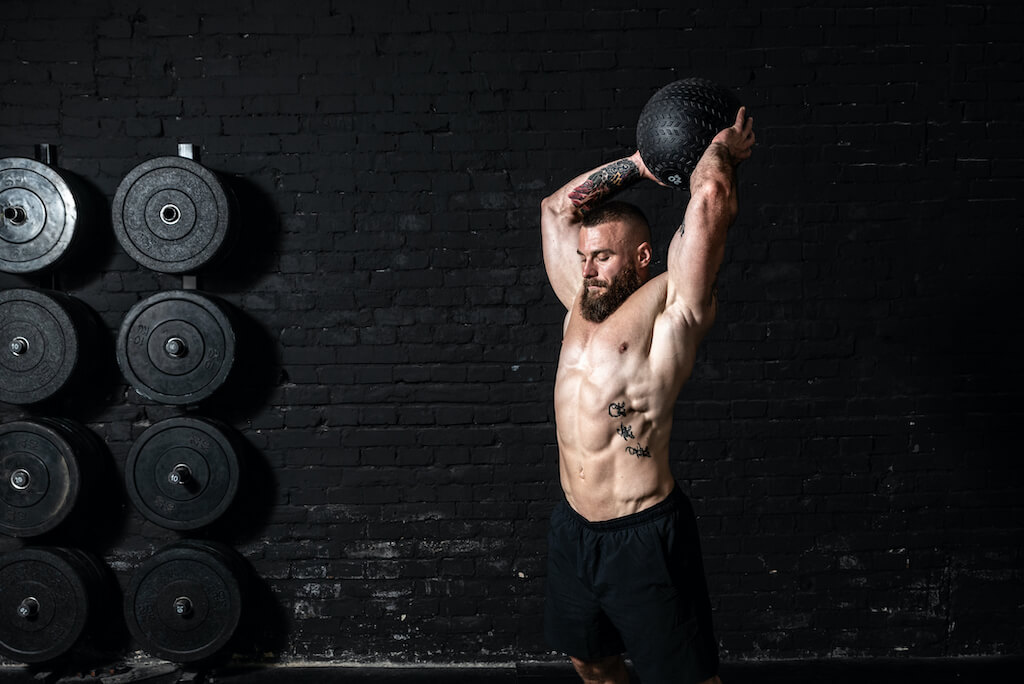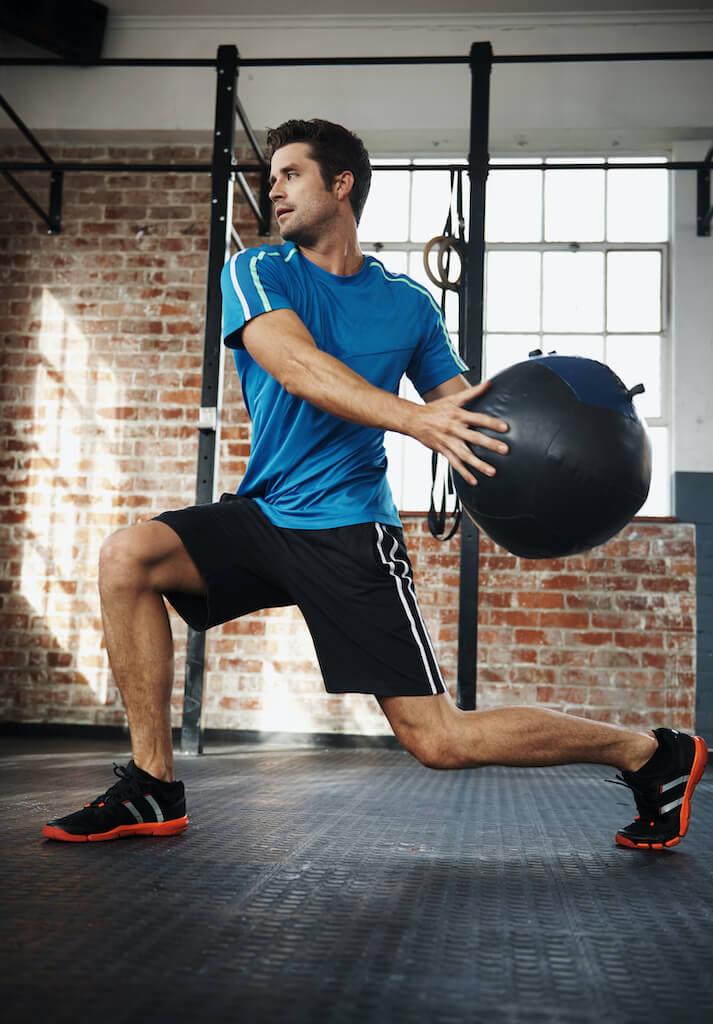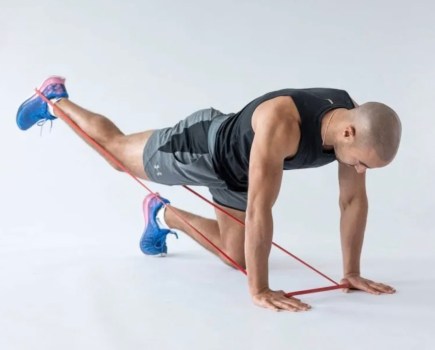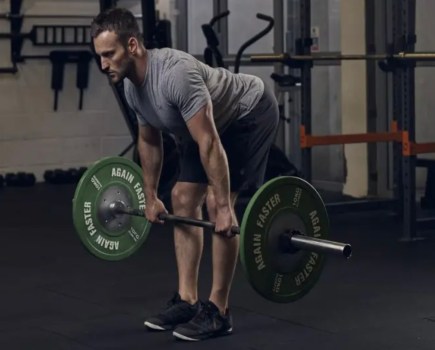Plyometric exercises are all about power. They exert maximum force in short intervals of time, making them superb for anyone looking to improve specific aspects of their sport performance, such as sprint speed.
Plyometrics are performed with as much explosive force as possible – usually with a low rep range between three and five – and that force has carry-over benefits to more traditional strength work. In short, your squat, bench and deadlift will all benefit from regular power play.
5 Plyometric Moves To Try

A man at doing gym plyometric pushups
1. Plyometric Press-Up
- Start in the top of a press-up position.
- Lower your body until your chest is a few inches from the floor.
- Push back up as explosively as possible so your hands leave the floor while your arms stay straight.
- As your hands return to the floor cushion the force by bending the elbows slightly.
- Pause momentarily, then repeat.
Make sure your hands are directly below your shoulders and your elbows stay close to your body. Commonly people will have a wide hand and elbow position, which is a recipe for shoulder injury.
2. Reverse Lunge with Knee Drive
- Stand on one leg and step back with your non-standing leg.
- Come down so your moving foot touches the floor and your front knee is at 90 degrees, while keeping your torso upright throughout.
- Explosively drive back up, predominantly through the front foot, to the starting position, and in one continuous movement bring the moving knee up in front of your body.
- Aim to move with such force that your standing leg performs a jump at the same time.
- Land with a soft knee and immediately repeat the exercise.
This exercise is difficult for beginners to coordinate the knee drive and the jump correctly. The knee drive should aid you in getting height in the jump. Try practising in slow motion and gradually speed up.
3. Depth Jump
- Stand on a box with feet shoulder-width apart – start with a 12-inch box and increase the height as you improve.
- Step off the box (do not jump) and land both feet shoulder-width apart, with ‘soft’ knees to absorb the impact.
- Aiming to keep your contact time with the floor to a minimum, jump straight back up into the air as high as you can.
- Step back on the box and repeat.
As you land from stepping off the box, make sure you keep your knees pushed out in line with your toes, not allowing them to buckle inwards. This will be a lot safer on the knees and allow for full use of your leg muscles.
4. Slam Ball
- Set up with a slam ball (the balls filled with sand) of suitable weight positioned at your feet.
- Squat down and pick up the ball.
- Stand back up and bring the ball overhead so your arms are straight.
- Throw the ball down at the floor as powerfully as you can while keeping your arms straight.
The common mistake I see with this exercise is a lack of commitment to the power. People will simply raise the ball overhead and drop it to the floor – give it some umph!
5. Medicine Ball Rotational Slam
- Grab hold of a slam ball or medicine ball and stand side on to a solid wall, with feet shoulder-width apart.
- Keeping your arms straight, twist from the mid torso and hips, and throw the ball at the wall as powerfully as you can.
- Allow the ball to fall to the floor, then collect it and reset your body position.
Make sure your arms stay straight throughout the throw. We are looking to use the obliques and hips to create the power, not the chest and triceps.

